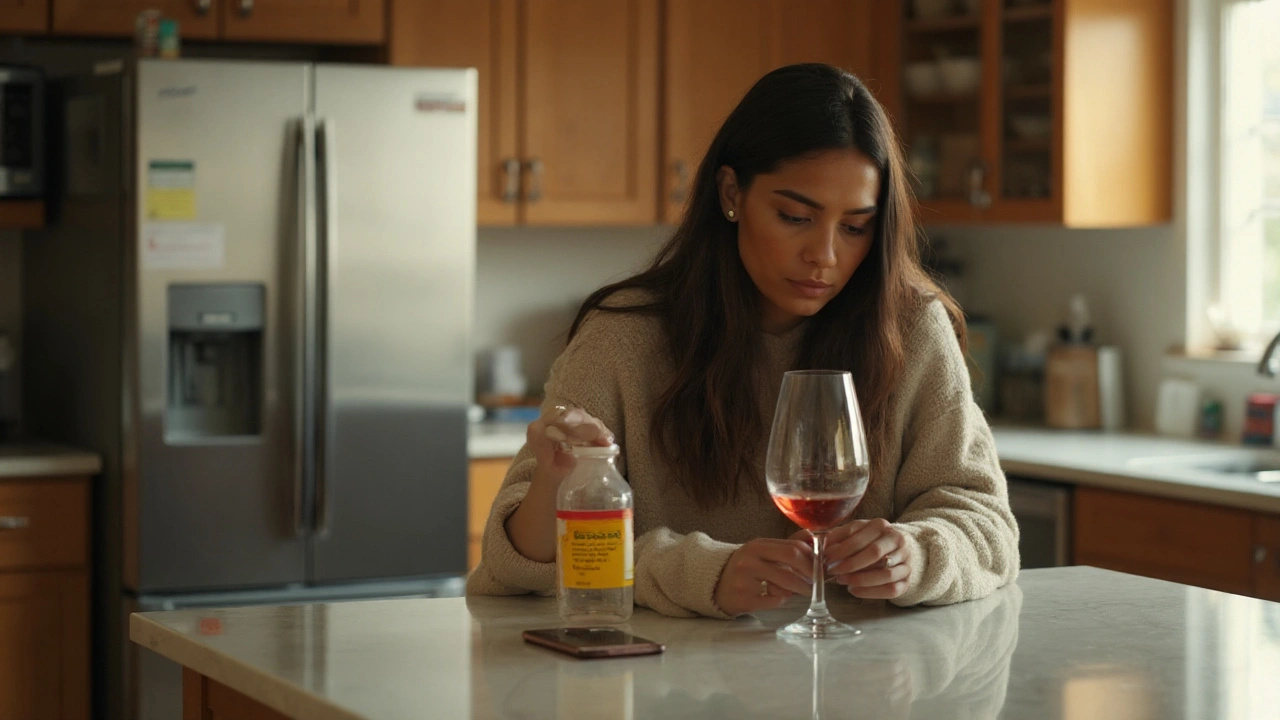Medications and Alcohol: Quick Guide
If you take prescription pills or over‑the‑counter meds, you’ve probably wondered whether a drink will mess things up. The short answer is: it can, and the effects vary a lot. This guide breaks down the most common problems, gives you practical tips, and helps you decide when to skip the cocktail.
How Alcohol Affects Common Medications
First up, pain relievers. Ibuprofen and naproxen are fine in small amounts, but mixing them with a lot of booze can hurt your stomach lining and raise bleeding risk. Opioids like codeine or oxycodone are a different story – alcohol can boost the drowsy effect, making you super sleepy or causing dangerous breathing slow‑downs.
Antibiotics also have a reputation for not playing well with alcohol. While not every antibiotic turns your face red, the combination can cause nausea, rapid heart beat, or intense flushing. Think of drugs like metronidazole or tinidazole – they’re known for a harsh reaction that feels like a mini hangover.
What about mental health meds? Antidepressants, especially SSRI types, can make you feel more anxious or dizzy when you drink. Benzodiazepines (think Valium or Xanax) are a big warning flag – alcohol strengthens their sedative power, which can lead to memory gaps or even loss of consciousness.
Blood thinners such as warfarin are especially sensitive. Even a couple of drinks can swing your blood’s clotting ability, raising the chance of serious bleeding. If you’re on any clot‑prevention drug, it’s safest to keep alcohol to a minimum.
Safe Practices When Mixing
Rule #1: Read the label. Most prescription bottles have a clear note about alcohol. If it says “avoid alcohol,” take it seriously – the manufacturer knows the risk.
Rule #2: Keep track of what you’re taking. Write down the name of each medication, the dose, and the time you take it. When you have that list, you can quickly check if a drink is okay.
Rule #3: Limit yourself. If a doctor says a moderate amount is fine, stick to one standard drink (about 350 ml of beer, 150 ml of wine, or 45 ml of spirits). Anything more starts to tip the balance.
Rule #4: Watch for warning signs. If you feel unusually sleepy, dizzy, or notice your stomach upset after a drink, stop the alcohol and call your doctor. Those symptoms are clues that the combo isn’t working for you.
Rule #5: Talk to your pharmacist. They see the full picture of your meds and can tell you whether a specific alcohol amount is safe. A quick chat can save a lot of hassle later.
In short, you don’t have to give up social drinks forever, but you do need to know which meds are a no‑go and how much is safe. Keep a simple checklist, listen to your body, and don’t hesitate to ask a health professional for advice. Staying informed means you can enjoy a glass when it’s okay and stay safe when it isn’t.
Medications and Alcohol: Safe Mixes, Dangerous Combos, and What to Do (2025 Guide)
Can you drink on your meds? Clear, evidence-backed rules, risk-by-drug tables, and step-by-steps so you know what’s safe, what’s not, and how to handle slip-ups.
Keanu Rutherford | Sep, 10 2025 Read More
